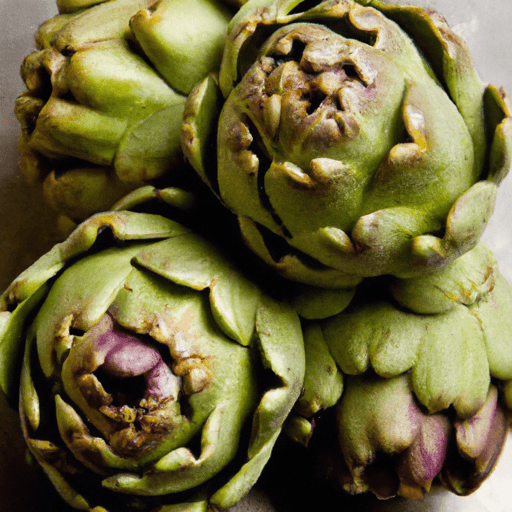All You Need to Know About Artichoke Heart Quarters
Artichoke heart quarters are a versatile and delicious ingredient that can elevate any dish. Whether you’re a seasoned chef or simply enjoy exploring new flavors, artichoke heart quarters are a must-have in your kitchen. In this post, we will delve into the delightful world of artichoke heart quarters, including their taste, common uses in cooking, nutritional value, and interesting history and facts.
Taste
Artichoke heart quarters have a unique, subtle flavor that combines earthiness with a hint of sweetness. They have a tender texture that complements a variety of dishes, adding a delightful bite while not overpowering other ingredients. The taste of artichoke heart quarters is often described as a cross between asparagus and spinach, making it a delicious addition to a wide range of recipes.
Common Uses in Cooking
Artichoke heart quarters can be utilized in countless culinary creations due to their versatility. Here are a few popular ways to use them in your cooking:
1. Salads and Antipasti
Toss artichoke heart quarters into salads for a burst of flavor and texture. They pair exceptionally well with ingredients like fresh greens, ripe tomatoes, olives, and creamy cheeses. They also shine in antipasti platters, adding a touch of sophistication to your appetizer spread.
2. Pasta Dishes
Artichoke heart quarters make a delectable addition to pasta dishes. Whether you’re making a simple garlic and olive oil spaghetti or a creamy artichoke and spinach fettuccine, the heart quarters provide a delightful richness and depth of flavor.
3. Pizza and Flatbreads
Why not elevate your homemade pizza or flatbread with artichoke heart quarters? Their distinctive taste pairs beautifully with a variety of toppings, such as mushrooms, sun-dried tomatoes, and tangy goat cheese. Add them to your favorite pizza dough recipe for a gourmet twist.
4. Dips and Spreads
Mash artichoke heart quarters into a creamy dip or spread for a crowd-pleasing appetizer. Pair them with cream cheese, garlic, and lemon juice for a tangy, flavorful dip that’ll have your guests coming back for more. They also work wonderfully as a topping for bruschetta or crostini.
Nutritional Value
Not only do artichoke heart quarters taste amazing, but they also boast an array of health benefits. They are low in calories, making them a great addition to any diet. They are also a good source of dietary fiber, which aids in digestion and helps maintain a healthy gut. Additionally, artichoke heart quarters contain essential vitamins and minerals, including vitamin C, vitamin K, folate, and potassium.
Interesting History and Facts
Artichoke heart quarters have a long history dating back to ancient times. They were highly regarded by the ancient Greeks and Romans for their rumored aphrodisiac and medicinal properties. The artichoke plant itself is a member of the thistle family and is believed to have originated in the Mediterranean region.
Today, artichoke heart quarters are cultivated all over the world, with Italy, Spain, and the United States being major producers. They are mainly harvested in the spring and fall, resulting in a peak season for fresh artichoke heart quarters.
In conclusion, artichoke heart quarters are a versatile ingredient that can bring a touch of sophistication and flavor to any dish. Whether they are incorporated into salads, pastas, or dips, their delicate taste and nutritional value make them a worthy addition to your culinary repertoire. So, why not experiment with some recipes and savor the delightful goodness of artichoke heart quarters today?
Origin:
The artichoke (Cynara cardunculus var. scolymus) is a perennial thistle native to the Mediterranean region. It is believed to have originated in Sicily.
Common Uses:
Artichoke heart quarters are the tender, fleshy part of the artichoke’s flower bud. They are commonly used in various culinary preparations:
- They are often marinated and used as an ingredient in salads, antipasti, and canapés.
- Artichoke heart quarters can be used as pizza toppings.
- They can be added to pasta, risotto, or incorporated in vegetable side dishes.
- Artichoke heart quarters can be included in dips, spreads, and sauces, such as spinach and artichoke dip or artichoke tapenade.
Nutritional Benefits:
Artichoke heart quarters offer several nutritional benefits:
- They are low in calories and fat, making them a good choice for weight management.
- Artichokes are an excellent source of fiber, which can aid in digestion and help maintain a healthy gut.
- They contain important minerals, such as potassium, magnesium, and manganese.
- Artichokes are rich in antioxidants, including silymarin and cynarin, which may help protect against oxidative stress and support liver health.
- They provide a good amount of vitamin C and vitamin K.
Unique Properties and Historical Significance:
- The artichoke is considered one of the oldest cultivated vegetables. It is believed to have been cultivated by the ancient Egyptians, Greeks, and Romans for its medicinal properties.
- In ancient Greece, artichokes were considered an aphrodisiac and were associated with fertility and love.
- Artichokes were brought to the New World by Spanish and French explorers in the 16th century, initially as an ornamental plant.
- The artichoke has a unique taste characterized by a slightly sweet and tangy flavor with hints of nuttiness.
- The term “artichoke” comes from the Arabic word “al-kharshuf,” which means “thorny vegetable.”




Use the share button below if you liked it.
It makes me smile, when I see it.